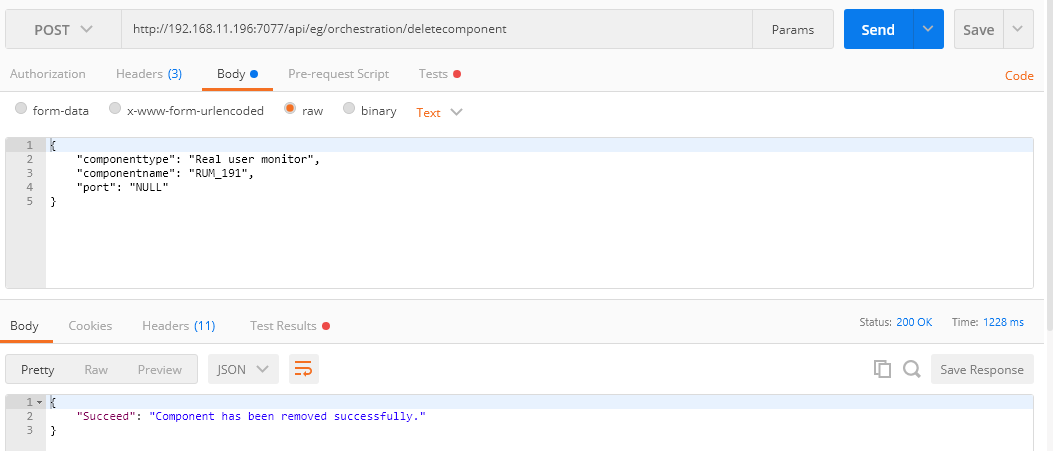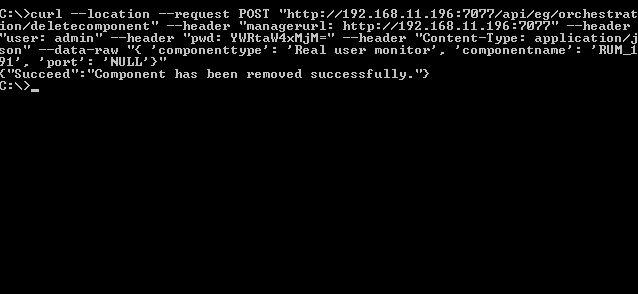Deleting a Component
Use this API to delete a component from the eG manager.
URL: http://<eG manager IP:port>/api/eg/orchestration/deletecomponent
Method: POST
Content-Type: application/json
| Parameters | Key values | Example |
|---|---|---|
|
Headers |
managerurl: Base URL of the eG Manager i.e., http://<IP address of the eG console:Port> user: eG username or domain/eG username pwd: Base64 encoded password |
Example with Default key values: { "componenttype":"Microsoft SQL", "componentname":"MSSQL", "port":"1433" } Example with both Default and Optional Key Values: { "componenttype":"Oracle Database", "componentname":"oradb4", "port":"1521" "sid":"egora" } |
|
Body |
Default: { "componenttype":"Component type", "componentname":"The nick name of the component", "port":"Port", } |
|
|
Optional: { "sid":"SID" } |
Note:
If an Oracle Database server is added with multiple SIDs, then the eG Enterprise system will monitor each SID as a different Oracle Database server. Therefore, while removing an Oracle Database server that supports multiple SIDs, you cannot issue a single command to remove all the SIDs at one shot. Instead, this command should be invoked separately for each SID.
| Type | Code | Content |
|---|---|---|
|
JSON |
200 |
{ "Succeed": "Component has been removed successfully." } |
| Type | Code | Content |
|---|---|---|
|
JSON |
401 UNAUTHORIZED |
{ "Error": "The selected component does not exist." } |

Figure 1 : Deleting a Component using Postman REST Client
Deleting a Component using cURL
To delete a component through the REST API using cURL, the command should be specified in the following format:
curl --location --request POST "http://<eG Manager IP:Port>/api/eg/orchestration/deletecomponent" -H "managerurl:http://<eG Manager IP:Port>" -H "user:<eG username or domain/eG username>" -H "pwd:Base64 encoded password" -H "Content-Type: application/json" --data-raw "{'componenttype': 'ComponentType', 'componentname': 'nick name of the component', 'port': 'port at which the component listens', 'sid': 'SID'}"
Note that the command specified above contains both the Default and Optional key values.
Figure 2 shows an example of deleting a component using cURL.
